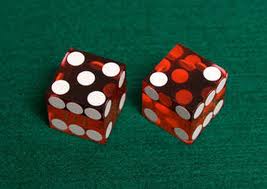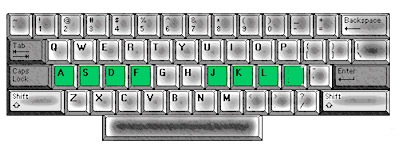
Bankroll:
First you need a bankroll, this should be money you can afford to lose. In other words it should not be your rent, grocery money, or your children’s college trust fund. Betting only money from the bankroll will prevent you from losing money that you need to live.
Session Bankroll:
No matter if you’re playing craps, blackjack, or roulette you should divide the money in your bankroll into “session bankrolls.” A session bankroll is a portion of your overall bankroll that you plan to spend during one session at a live gaming table. For craps one session bankroll should be 100 times larger than the tables minimum wager. For example if it is a 1 dollar minimum bet your session bankroll should be one hundred dollars. If the table’s minimum is five dollars then your session bankroll should be five hundred dollars.
The reason for setting up session bankrolls is that beating craps is impossible. Eventually you will hit a bad losing streak. Just as your general bankroll protects you from losing the money you need to live, session bankrolls will help protect the money you need to play.
Session bankrolls together with your general bankroll, keep you from spending every dime you’ve set aside in one trip to the table. The session bankroll also eliminates the possibility that you’ll dip into your regular living budget because you have lost all the money you set aside to play in just a few hours. Also with session bankrolls if you hit a losing streak you can leave before too much damage is done and return for a second, third, or even fourth attempt.
Rolling Stop-loss:
A rolling stop-loss is a more sophisticated method of handling a stop-loss. It works better than the typical “stop when you lose it all” rule. It also prevents the disappointment of being significantly up and then losing it all back.
A rolling stop-loss can be any amount you choose and there are various ways of calculating it, but the “sliding window” is pretty typical. Let’s say you start a session with 100 bets. If you win 50 bets then the window slips forward by that amount. The original stop-loss was zero (a net loss of 100 bets); the new stop-loss has moved forward to 50. You always exit the session if you lose 100 bets from the highest point of the bankroll. That means you’re permanently in a profit zone after a net win of more than 100 bets.
A stop-loss is effective because it limits action. It’s a practical way of managing your money when playing a negative-expectation contest, but it doesn’t change the house edge. Wager-for-wager you won’t win any more or less on average than someone who never stops playing until the bankroll is exhausted. But if losing is in your future, it will happen more slowly.The ideal stop-loss is one that matches your temperament and betting style.
Set a win-limit which is the a win amount that would cause you to exit a session. Many people use a static win-limit of double the buy in or double the session bankroll. Some people have a rolling win-limit. Like a stop-loss, a win-limit doesn’t change the house edge, but it does lock up profits for a particular session. After all, you must leave the casino at [I]some[/I] point. You might as well leave when you’re up.
Bankroll Size:
The chance of winning does not depend on how much money you have, but rather, the amount of your bankroll compared to the size of your bets. That is what affects the odds of having a profitable session. For an example let’s say that three players are all hoping for a fifty dollar profit. Each player only makes $5 Pass Line bets with no odds however their individual bankrolls differ. Player one has $25 and a 29% chance to hit the mark, player 2 has $50 and a 43% chance to succeed, and player 3 has $100 and a 57% chance to profit fifty dollars. The likelihood of success improves as the size of the bankroll increases. A low bankroll reduces the number of plays before you either reach your win goal, or lose everything. I want to maximize my opportunities while minimizing the exposure that my money has to endure.
Here’s what happens when these $5 Pass Line bettors want to make either a set-amount of $50 in profit, or lose it all in trying Player one with a $25 stake Mick can expect 49 decisions, boom or bust, Player two with a $50 stake anticipates 99 rounds, good or bad, and Player three should go 207 decisions on his $100, win or lose.
Basic Strategy:
As for strategies of play in craps it is important to understand one basic concept of wagering before we proceed. If you cannot win three bets in a row you are not going to win in long run no matter what. To understand this statement we only need to examine a simple wager on the toss of a coin between two players. The flip of a coin is a 50/50 proposition or even money. If they each bet one dollar per decisions and player one wins the first bet but player two wins the second and third bet then player two has risked three dollars to win one dollar on an even money bet. In other words his risk reward ratio was 1:3 but his chance of winning was only 1:2. In order for this to have paid even money or true odds in this scenario, player two’s chance of winning would have had to have been 3:1.
Now let’s look at a different approach and a different scenario in the coin flip game. If player 1 wins the first three decisions but instead of betting one dollar per flip presses his bet each time the odds are much better. In this scenario player one has risked three dollars to win eight dollars. The rick reward ratio is now 8:3 and the chance of winning was 1:2.
In other words while you are playing nothing is your money except the session bankroll you started the session with. The bets you “win” are not yours until the session has ended. So what we are going to do on the craps table is to attempt to win with the houses money more that with our own money. If we are playing on a one dollar minimum table we would start with one dollar flat bet on the pass line. If we the shooter rolls a point number on the come out roll take full double odds which all houses in Las Vegas allow. Let’s say the point is worse case scenario four or a ten which would be odds of 2:1 against winning. We now have a total of three dollars bet, one on the pass line and two behind that bet for odds. If we win this bet we will be paid even money on the one dollar flat and 2:1 (the true odds) for the two dollar odds we place after the point was established. So we were paid 5:3 when it was 2:1 against us. Not the best return but we can work with it. On the next come out roll you place the three dollars you originally bet on the last decisions along with the five dollars you were paid on the pass line. On the come out roll it is 2:1 your favor that a seven or eleven will roll vs. a two, three, or twelve. If you win on the come out roll you are actually getting paid 8:3 as only three of the eight dollars is from your session bankroll and the other five dollars still belongs to the house. So in that instance you had a 2:1 advantage and instead of getting paid the true odds of 1:2 you enjoyed a much better return of 8:3.
In the even the shooter does not roll a natural on the come out roll (2, 3, 7, 11, or 12) but instead rolls another point. Even if that point is another four or ten, which we recall is 2:1 against us, you are still going to get paid 8:3 if you win. Also we do not take odds after winning the first of three in a row. So let’s say we win the second decisions we now have risked three dollars to win thirteen dollars. On the third decisions we press the entire sixteen dollars, the three from our session bankroll and the thirteen that still belongs to the house, right back on the pass line. If we win with a natural then we just got paid 16:3 with a 2:1 chance of winning on the come out roll. If the shooter rolls a point number again, even if it is a four or a ten and 2:1 against us, we still get paid 16:3 if we win the third decision.
At anytime during your session you win three wagers in row using this strategy you simply start back at one dollar and repeat. Of course whenever you lose you always go back to one dollar as start counting towards three in a row once more. Using the bankroll money management along with setting a stop-loss and win-limit with just one string of three wins in row you gain twenty-nine units while only risking only three. This means you only have to win three in a row out of every thirty decisions to break even. If the dice are favorable during your session and you can hit two or three streaks of three wins in a row out of every thirty-two decisions you can gain as much as fifty-eight units per thirty- two decisions which is a payoff of 1.8125:1 in a situation where the house only enjoys a 0.572% edge.
It should be noted that you can play with a similar approach in blackjack along with some basic card counting to increase your chances in a similar method of manipulating the payoffs to counter the odds. You cannot however apply this strategy to roulette as the odds of winning three bets in a row are drastically less than in craps or black jack










